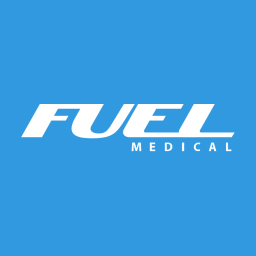
On February 21, Change Healthcare, the nation’s largest medical claims-processing network, experienced a cyberattack that shut down the company’s operations, pausing the processing of claims and insurance payments to practices nationwide. By one estimate, providers are losing $100 million each day that Change Healthcare, a United Healthcare subsidiary, is down.
To help your practice successfully operate during this challenging time when many are experiencing a financial shortfall, Michelle Netoskie, Fuel Medical’s Billing, Coding & Compliance Manager, offers some advice.
Assess the Impact on Your Practice & Implement a Plan
1. Identify the percentage of your revenue affected by the Change Healthcare cyberattack.
2. Keep providing care to patients with insurance affected by the Change Healthcare issue. Not seeing these patients will do more harm than good from a public relations standpoint. You can hold their claims until Change Healthcare is back up and communicate directly with payers who use Change to see if they can offer temporary flexibility in filing deadlines.
3. If Change Healthcare IS your clearinghouse, consider switching to a different clearinghouse to submit claims and receive payment from the payers unaffected by the Change Healthcare cyberattack. Check with your EMR vendor for options.
If you are a Medicare provider that needs to change your clearinghouse, contact your Medicare administrative contractor (MAC) to get a new electronic data interchange (EDI) enrollment to make the switch.
If Change Healthcare ISN’T your clearinghouse, but the Change issue is affecting your payments from that clearinghouse, consider implementing the following measures at your practice:
If your Change Healthcare-related payments are:
- Less than 10% of your total revenue—the Change Healthcare issue will have a minimum impact on your business, so no action is necessary.
- Over 10% but under 25% of your total revenue—check your reserves and potentially consider adding a patient or two a day per provider with insurance not affected by Change Healthcare. This may also be an opportunity to collect all patient responsibility at the time of service or take advantage of the loan option from the Centers for Medicare & Medicaid Services (CMS)—for details, see the “Use these Programs to Fill the Financial Gap” section below.
- 25 to 50% of your total revenue—if no reserve or line of credit is available and the loan option from CMS is not enough (for details, see the “Use these Programs to Fill the Financial Gap” section below), increase appointments for patients with insurance not affected by the Change Healthcare issue. For example, you can add two or three patients per day per provider or extend your hours if you usually close the office early on certain days. Also, if a surgeon doesn’t have a full day of surgery, try to book the afternoon. Let staff know that these are all temporary solutions.
- Over 50% of your total revenue—if no reserve or line of credit is available and the loan option from CMS is not enough (for details, see the “Use these Programs to Fill the Financial Gap” section below), fill any available appointment slots with patients with insurance or private pay not affected by Change Healthcare. This is a good time to make a push on collecting the outstanding patient A/R from the new year deductibles and coinsurance and make at-the-time-of-service collections the top priority. Let staff know that these steps are a temporary solution.
4. Regardless of the revenue category your practice falls into, check your insurance:
- Reach out to your insurance agent to see if you have any coverage under cyber insurance/business insurance for loss-of-income coverage.
- Check your coverage to ensure you have the correct coverage in case your practice experiences a security breach.
Use These Programs to Help Fill the Financial Gap
Change Healthcare/Optum Payment Disruption (CHOPD) Accelerated Payments
The Centers for Medicare & Medicaid Services (CMS) made CHOPD accelerated payments available to Part A providers and advance payments to Part B suppliers experiencing claims disruptions due to the Change Healthcare cyberattack. The payments will be granted in “amounts representative of up to 30 days of claims payments” and “will be repaid through automatic recoupment from Medicare claims for a period of 90 days.” To learn more, go to https://www.cms.gov/newsroom/fact-sheets/change-healthcare/optum-payment-disruption-chopd-accelerated-payments-part-providers-and-advance.
Optum Temporary Funding Assistance Program
This program from Optum, a subsidiary of United Healthcare, helps providers whose payments from payers were affected by the Change Healthcare incident. The funds are available with no fees, interest or other associated costs—they will simply need to be repaid when Change Healthcare is back up and running. For more information and to determine eligibility, go to www.optum.com/en/business/providers/health-systems/payments-lending-solutions/optum-pay/temporary-funding-assistance.html.
Availity Lifeline Resources
Availity, a revenue cycle management company, offers alternative processing pathways for healthcare organizations affected by the Change Healthcare hack. To learn more, go to https://www.availity.com/availity-lifeline-self-serve-resources.
Need more help staying profitable during the Change Healthcare shutdown? Contact your regional manager today.
